Bluetooth, which offers short-range wireless technology, is now standard on most smart devices, including wireless headphones, smart watches, remote controls, game controllers, and many more. Most of these devices are designed to operate with smartphones or computers.
Audio streaming, file sharing, peripheral devices, the Internet of Things (IoT), and smart home devices are some common Bluetooth applications.
Bluetooth allows devices to communicate wirelessly over short distances. The wireless interface is known for its low power consumption, wide range of coverage, encrypted data transfer, high compatibility, and ease of use.
The latest version of Bluetooth is Bluetooth 5.3, released in July 2021. While the maximum range of Bluetooth 4.x was 60 meters in ideal conditions, Bluetooth 5.x provides a maximum range of 1350 meters. The indoor range of Bluetooth 4.x was limited to 10 meters with the use of an antenna, and that has increased to 30 meters with Bluetooth 5.x.
Although Bluetooth was developed for short-range communication, that’s changed with the latest version. Now, Bluetooth can facilitate electronic applications with a descent range indoors and outdoors, which has opened new potential for the technology. It also supports faster data rates of up to 2 Mbps, allowing for simultaneous connections of up to eight devices.
A few notable features of Bluetooth 5.3 include:
- Periodic Advertising Enhancement – improves Bluetooth advertising, which is how devices find one another
- Channel Selection – lets devices select the best channel for communication, which has improved the range and reliability of the connection
- Message Authentication Code (MAC) 3 – significantly increases security to ensure conversations are private
Bluetooth has become an integral part of several mainstream microcontroller boards and microcomputers. While microcontroller boards and microcomputers are excellent for prototyping, production models are often built on standalone microcontroller chips, where peripherals are explicitly integrated onboard. The same is true with the addition of Bluetooth. Most production devices rely on a specific chip or board to add Bluetooth.
Although Bluetooth has become standard, the Bluetooth chips and modules from different vendors differ. Some applications demand high-speed data communication over range capacities and vice versa. So, the latest Bluetooth modules accommodate these requirements.
In this article, we’ll cover the top Bluetooth modules that offer the most extended range. We’ll also review some of the more popular Bluetooth 5.3 modules.
Long-range modules
The top Bluetooth modules with the longest range include:
1. Fanstel BT832XE
2. Semtech SX1308
3. MikroElektronika RN4871
4. SparkFun Bluetooth LE Long Range Module
These are some of the best long-range Bluetooth modules currently available. However, the actual range of a Bluetooth module also depends on the environment in which it is used. For example, it’s typically shorter in an urban area with many buildings and infrastructure. The ideal module will depend on specific needs and applications.
Fanstel BT832XE
The Fanstel BT832XE is a Bluetooth 5.3 module with a range of up to 1350 meters and an external +6 dBi antenna (the range can also be extended by using the external antenna). It’s based on the nRF52832 chip and is ideal for industrial automation, asset tracking, and remote monitoring applications. Overall, the BT832XE and BT832X offer improved range, speed, and efficiency.
The Fanstel module operates on a supply voltage of 3.3~4.2V, with a power consumption of 100 microamperes in active mode (it’s reduced to one microampere in sleep mode). The BT832XE low-power design makes it ideal for battery-powered applications. The module can operate in a temperature range of -40˚ to 85˚ C. It weighs only two grams and dimensions of 25 x 17 x 3 mm.
The BT832XE is available in various packages, including a development kit, a module, and a breakout board. The development kit includes the module, an antenna, a USB cable, and software. The module is a ready-to-use solution that can be easily integrated into an application. The breakout board provides access to all of the module’s pins, making connecting it to other devices easy.
Semtech SX1308
The Semtech SX1308 is a Bluetooth Low Energy (BLE) radio transceiver module having a range of up to 800 meters with an external antenna. It’s ideal for asset tracking, remote monitoring, and environmental sensing applications.
This 25 x 17 x 3 mm chip has operating frequencies of 868 MHz, 915 MHz, or 2.4 GHz, with an operating voltage of 3.3~5V. The module offers data rates up to 2 Mbps for up to 800 meters. Its power consumption ranges from 100 microamperes in active mode to one microampere in sleep mode. The chip weighs two grams. The operating temperature range is -40˚ to 125˚C.
Semtech SX1308 is a digital baseband chip that’s designed to offer breakthrough gateway capabilities in the ISM bands worldwide. It integrates the LoRa concentrator IP, which allows it to support LoRaWAN communication. However, it’s not a LoRa module. Some LoRa modules include the SX1308 chip and components such as an antenna, a power supply, and a microcontroller. As a ready-to-use device, it can be easily integrated into a LoRaWAN application.
MikroElektronika RN4871
The MikroElektronika RN4871 is a Bluetooth Low Energy (BLE) module for easy integration into embedded systems. Based on the Microchip RN4871 chip, this MikroElektronika module supports Bluetooth 5.0. and offers a range of up to 600 meters with an external antenna.
The GATT (Generic Attribute Profile) profile allows the RN4871 to exchange data with other Bluetooth devices. It uses a GATT Client to connect to and interact with other Bluetooth devices and a GATT Server to share its services and features with other Bluetooth devices. The protocol also allows the RN4871 to participate in a mesh network, creating a low-power, low-cost network of devices.
The RN4871 is 12 x 15 x 3 mm and weighs about two grams. Its operating voltage is 3.3V, and its power consumption ranges from 100 microamperes to one microamperes. The module offers a data speed of 2 Mbps to up to 600 meters with an external antenna. The operating temperature range is -40˚ to 125˚C.
This module is ideal for smart homes, industrial automation, inventory management, customer tracking, medical implants, wearables, asset tracking, and fleet management applications.
SparkFun Bluetooth LE Long Range Module
The Sparkfun NanoBeacon module offers the InPlay IN100 NanoBeacon Bluetooth 5.3 beacon SoC, a Qwicc connector, and GPIOs. Designed to work with Bosch Sensortec BME280 3-in-1 humidity and the BMA400 ultra-low power accelerometer sensors, the IN100 NanoBeacon SoC offers an extended range of up to 500 meters with an external antenna. Based on the nRF52832 chip, this module supports Bluetooth 5.0.
The basic version of this breakout is made for mass production but lacks a reset button and power LED. However, it has male headers connected to the board’s through-hole pins. The Lite version is made for prototyping and has a reset button and power LED. It’s ideal for applications like indoor positioning, geofencing, asset tracking, inventory management, and delivering targeted marketing messages.
Bluetooth 5.3 modules
Some of the top Bluetooth 5.3 modules now available include:
1. Nordic nRF5340 DK Development Kit
2. Laird Connectivity Lyra P Bluetooth 5.3 Module
3. Panasonic PAN1780 Bluetooth 5.3 Module
4. Espressif ESP32-C3-DevKitM-BT
5. BlueNRG-5 S2 Bluetooth 5.3 Module
Nordic nRF5340 DK Development Kit
This is a complete development kit that includes a nRF5340 Bluetooth 5.3 module, a PCB antenna, a USB-C cable, and software tools. The kit includes a few items:
- The nRF5340 SoC, a 4.3-inch TFT display with 480×272 resolution
- A 2.4 GHz RF antenna
- A USB Type-C connector for power and data A debug connector for connecting to a PC
- Buttons and LEDs
- A pre-programmed bootloader that makes it easy to flash the nRF5340 SoC with the new firmware
The comprehensive software development kit (SDK) includes everything required to develop applications for the nRF5340 SoC. The SDK contains drivers, libraries, examples, and documentation. This is a powerful platform for developing wireless applications, such as Bluetooth BLE devices, Thread networks, NFC tags, Zigbee networks, Bluetooth Mesh networks, and 802.15.4 devices.
Laird Connectivity Lyra P Bluetooth 5.3 Module
The Laird Connectivity Lyra P Bluetooth 5.3 Module is a compact, high-performance Bluetooth module based on the Silicon Labs EFR32BG22 SoC. It features a 32-bit Arm Cortex-M33 processor, 512kB of Flash memory, and 32kB of RAM. It also supports Bluetooth 5.3, Bluetooth mesh, and many other features.
The Lyra P also supports Bluetooth mesh, a low-power networking protocol that can be used to create large, scalable networks of devices. The module has an integrated antenna with up to 8dBm transmit power and -98.6dBm receive sensitivity. UART, SPI, I2C, and GPIO are onboard for communication with any microcontroller. The module is ideal for wearable devices, IoT sensors, smart homes, industrial automation, and medical devices.
Panasonic PAN1780 Bluetooth 5.3 Module
The Panasonic PAN1780 Bluetooth 5.3 Module is based on the Nordic nRF52840 SoC. It’s a high-performance, low-power Bluetooth module with 32kB of RAM, 256kB of Flash memory, and an Arm Cortex-M4 processor (running at 32 bits each). It’s compatible with Bluetooth 5.3, Bluetooth mesh, and others.
This module is 15.6 x 8.7 x 2.1 mm, and it weighs 1.3 grams. The supply voltage ranges from 1.7 to 5.5V, with power consumption at 50 mA in active mode and 10 microamperes in standby. The module is ideal for IoT, medical instrumentation, industrial automation, and wearable electronics use.
Espressif ESP32-C3-DevKitM-BT
One of the popular single-board microcontrollers, Espressif ESP32-C3-DevKitM-BT, is an entry-level development board based on the ESP32-C3-MINI-1 module. It’s a small, low-cost board, ideal for developers who want to start with the ESP32-C3 SoC. The kit features an ESP32-C3-MINI-1 module, 4 MB flash memory, 320 KB RAM, Bluetooth 5 LE, 2.4 GHz Wi-Fi, USB-C connector, LEDs, and GPIO pins.
It supports the ESP-IDF development framework, an open-source SDK for developing applications for the ESP32 SoC. With a built-in bootloader, it’s easy to flash new firmware to the board. It also has a debug port, which can connect the board to a PC for debugging purposes. The ESP32-C3-DevKitM-BT is a good choice for several IoT applications, including asset tracking, smart home devices, industrial automation, and wearable devices.
BlueNRG-5 S2 Bluetooth 5.3 Module
The BlueNRG-5 S2 Bluetooth 5.3 Module is a small, low-power module for wearables and other mobile applications. It’s based on the STMicroelectronics STM32WB55 SoC and features a 32-bit Arm Cortex-M4 processor, 128kB of Flash memory, and 64kB of RAM. It supports Bluetooth 5.3, Bluetooth mesh, and other features like Bluetooth LE Audio and LE Power Control.
The module is 13.5 x 15 x 1.6 mm and weighs 1.5 grams. The supply voltage ranges from 1.7 to 3.6V, with a typical power consumption of 100 mA in transmit mode and 10 uA in standby. The module is ideal for IoT sensors, wearable devices, and smart home appliances.
You may also like:
Filed Under: IoT applications, Tech Articles, Wireless


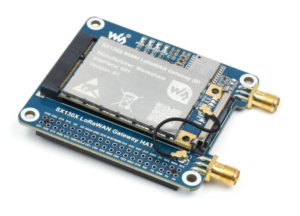
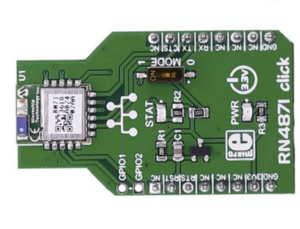
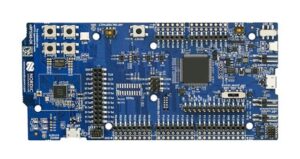



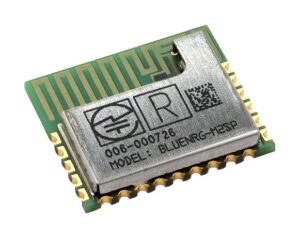




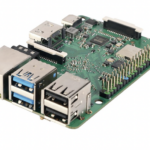
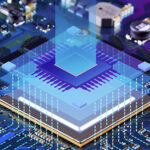

Questions related to this article?
👉Ask and discuss on EDAboard.com and Electro-Tech-Online.com forums.
Tell Us What You Think!!
You must be logged in to post a comment.